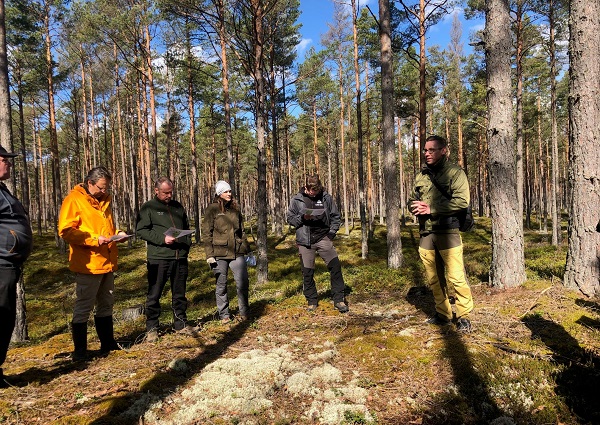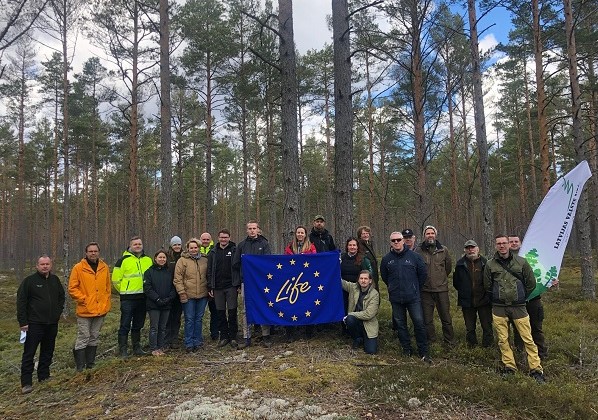LVM Presents the Works Planned in the “Engures ezers” Nature Park as Part of the LIFE-IP LatViaNature Project
An informative seminar was held on 27 April in the areas of the planned works, to inform the public about the activities that JSC “Latvia's State Forests” (LVM) will carry out within the framework of the LIFE-IP LatViaNature project in the “Engures ezers” nature park until the end of 2028.
During the meeting with representatives of the local government, the State Forest Service, the Nature Protection Authority, the Lake Engure Nature Park Foundation and other stakeholders, LVM shared the plans and those present discussed the best solutions to improve the values of the nature park – the Forested Seaside Dunes, a habitat of European Union importance. They also reviewed the most suitable methodological solutions for improving habitat structures and bringing them as close to their natural state as possible.
The work area will also serve as one of the places where the developed remote sensing forest monitoring methodology will be tested.
It is expected that the first works to improve the structures of the forested seaside dunes in the “Engures ezers” nature park could begin already this autumn, when the creation of sunlit openings characteristic of the habitat would start. In general, works in the park are planned in two areas with a total area of 33 hectares.
“Both drawing experience from history and evaluating best practice examples in the management of this biotope, working together with dune experts we have evaluated what works would be desirable in the “Engures ezers” nature park to preserve this special biotope in good quality for future generations. The historical information about the management of this place shows that already in the time of Duke Jacob, in the 17th century, relatively intense economic activity or disturbance took place in these forests: coal was burnt, amber was mined, and in later years shells were dug for the purposes of poultry farming, in a way providing the habitat with the necessary disturbances,” says Jānis Zitāns, Head of Forest Management Planning of LVM Zemgale Region.
If the coastal dune forests lack the natural disturbances that they need such as wind, fire or regular disturbances in the ground cover that maintain open sand areas – they gradually overgrow and the living conditions necessary for a number of plant and animal species disappear. In the absence of the necessary number of beneficial disturbances, it is preferable to replace them with biotechnical measures that mimic natural processes in a sense, for example, thinning of trees and bushes, controlled burning and loosening of ground cover.
The aim of the LIFE-IP LatViaNature project is to develop and test innovative methods to simulate the desired natural disturbances – the effects of fire and wind, in the forest also in these forested seaside dunes.
Representatives of the Nature Protection Authority, Latvian University of Biotechnical Sciences, Engure Municipality Administration, Lake Engure Nature Park Foundation, State Forest Service, SIA “Rīgas Meži” and SIA “Sodra” took part in the seminar. The participants of the seminar, viewing the planned work in the nature of the place, were introduced to the planned works and their importance in improving the habitat condition. The representatives of SIA “Rīgas meži” shared their experience in the management of forested seaside dunes, thus continuing the exchange of experience of large forest owners in preserving natural values, which was started in November 2022.
In general, within the framework of the “LIFE-IP LatViaNature” project, LVM plans habitat restoration works in three specially protected Natura2000 territories: in the nature park “Engures ezers”, in the nature reserve “Grebļu kalns”, in the protected landscape area “Ziemeļgauja” and in the inland dune of Zvirgzde with a total area of approximately 100 hectares. All these areas are notable for the presence of European rare and protected geologically determined forest habitats dependent on natural disturbances: wooded coastal dunes, lichen-rich pine forests, coniferous forests on ossified landforms, as well as old and natural boreal forests in dry growing conditions.





